Pull ups are awesome, they’re one of the best exercises for your upper body, and a great demonstration of relative strength.
We did a recent blog covering how to get your first pull up and one tackling chin ups vs pull ups .
Today we’re going to explore the best accessory movements specifically for the pull up.
For those people who are looking to get their first pull up, or for those who are looking to crank up their performance on pull ups, having the right accessories can be huge.
We explored the research and dug into different studies examining the determinants of success for the pull up, what kind of muscles were most critical for it, and what exercises could build those up best FOR THE PULL UP.
So let’s get into it
A person’s success with pull up is heavily dependent on their muscle mass
The pull up utilizes a lot of muscle mass across our upper body and trunk.

Some of the major muscles are the lats, teres major, biceps brachii, brachioradialis, infraspinatus, pec major, trapezius, and trunk muscles like rectus abdominis and external obliques.
So essentially, it uses a ton of upper body pulling muscles and anterior trunk muscles.
Performing pull ups and it’s derivatives will do a good job of challenging these muscles, but we can incorporate some additional movements to help get more volume and build them further.
Usually people first jump to the seated lat pulldown when thinking of accessory movements for the pull up.
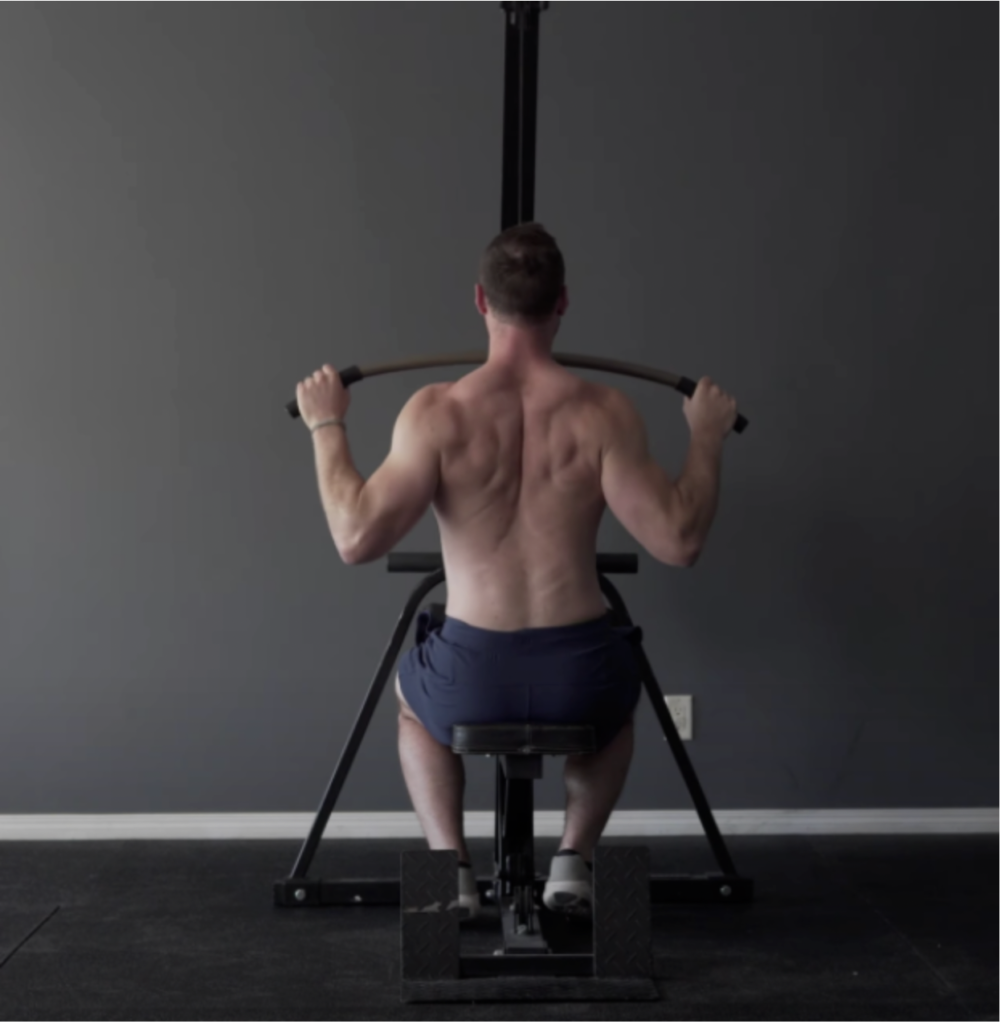
This seems reasonable, it looks pretty similar and we can easily scale the weight, making it more accommodating than the standard pull up.
However, we’ve had numerous studies emerge showing that strength on the lat pulldown doesn’t have a strong relationship with ability to perform pull ups.
This might seem weird to people but when we look at studies analyzing the comparison of activation of different muscles in the pull up and the seated lat pull down, it starts to make sense.
For instance, while the lat pulldown does have a similar activation of some of the back muscles, it doesn’t challenge the midsection, particularly the abdominal muscles, like the pull up.
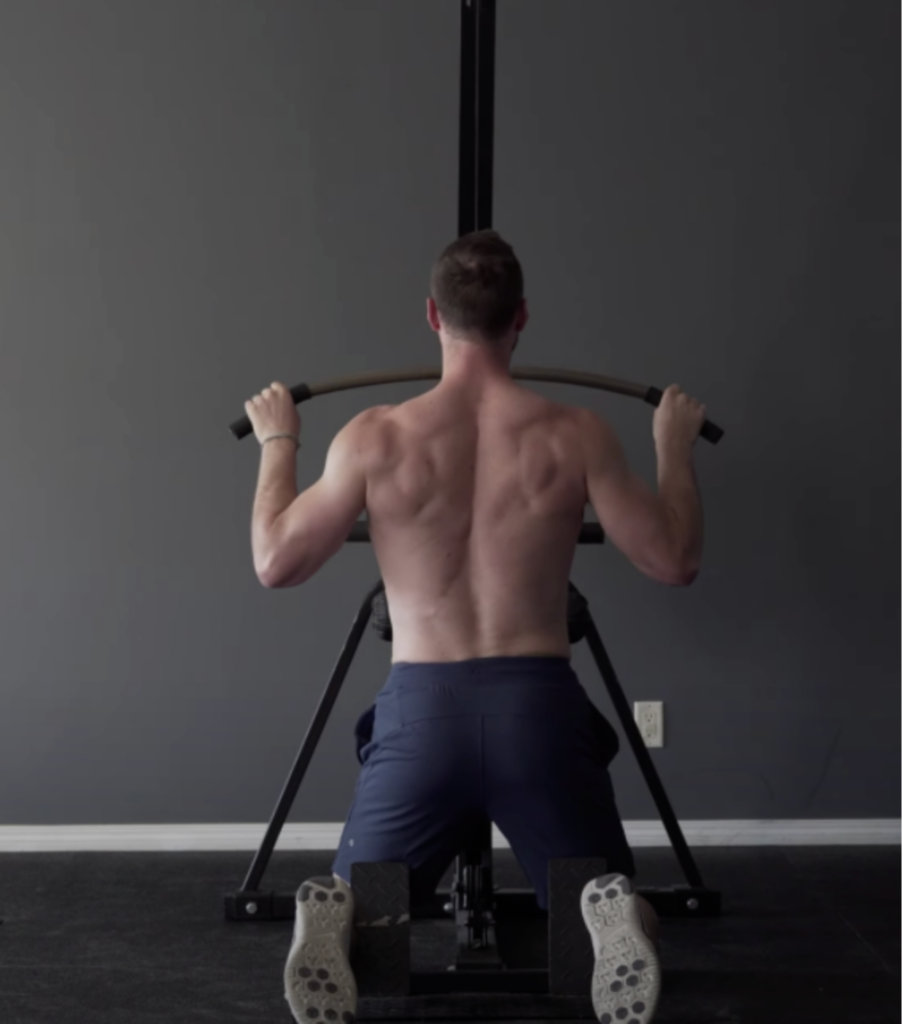
In contrast, if we perform the lat pulldown in a kneeling position, we actually see a much more similar muscle activation pattern as the pull up.
This is done just like a regular seated pulldown where we are holding on to a handle and focusing on bringing the handle to our chest, but we don’t have the advantage of the seat to allow us to lean back as much and use momentum.
As well, since our legs aren’t secured under pads, we now have to fight our spine and hips trying to extend, making our anterior abdominal muscles work harder – similar to a pull up.
Therefore, utilizing this kneeling pull up might be a good solution and it has shown very similar muscle activation patterns to the traditional pull up.
This can be done with a standard pulldown machine, but just kneeling in behind the seat.
It can also be done with a cable system or you can also set up some bands and perform it.
Now, while this movement shows a similar pattern to the pull up, that doesn’t necessarily mean it’s the best accessory movement.
Since you’re likely doing pull ups or variations of them, and challenging that pattern, you are probably best off focusing our accessories on more targeted movements that challenge these muscles we use in a more isolated fashion to really get them kicking into a higher gear, instead of just repeating the same relative stress.
So when we’re looking at the pull up, we see the major muscles working being the:
Lats, Biceps & brachioradialis, Infraspinatus, Lower Trap, Mid Trap And Rectus Abdominis and External Obliques.
What we want to do is pick one or two movements for each of these and then implement them in our program following our pull up work.
In our blog on how to get your first pull up, we outlined the basics of building a program focused on pull ups, so you can check that out for inspiration.
When we consider the function of the lats, there are two main types of exercises that we want to look for:
- A shoulder extension based exercise
- A shoulder adduction based exercise
Since you should be doing pull ups, which will be providing a certain type of stress to the lats, we can pick movements for these patterns that complement this and don’t conflict.

For instance, a close grip row with a slight lean back is an excellent option to utilize given the peak challenge and angle we are challenging the lats to work through for shoulder extension.
Similarly, a kneeling side bent lat pull in is a good option since we can work the lats one at a time and really emphasize an adduction pattern.
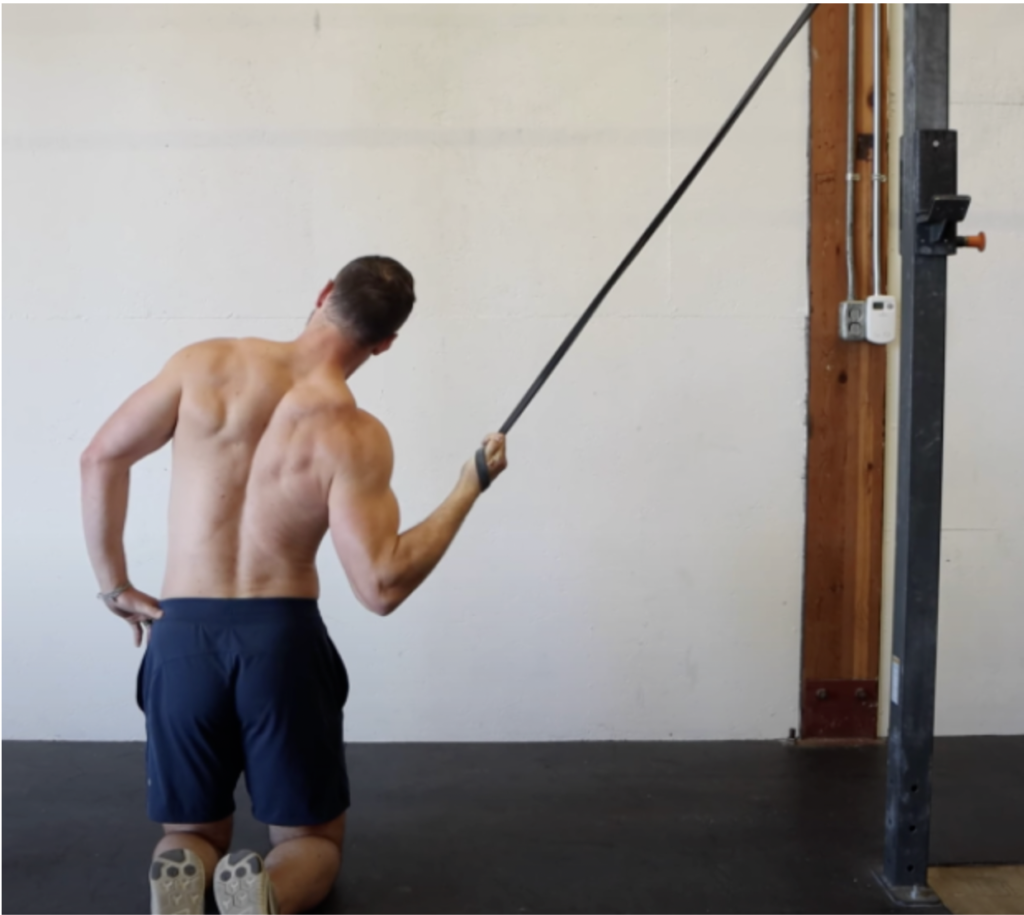
As well, since it’s a unilateral exercise, we can more easily focus on squeezing and using a mind muscle connection to maximize lat activation – which we have some studies demonstrating we can do through deliberate and directed attention.
Now we can move on to the biceps brachii and brachioradialis.
Most people probably know the biceps as the elbow flexors.
However, the brachioradialis is also really important for this action.
Performing the standard bicep curl shows good activation of these muscles.
So we can simply add in some curls into the routine.
If you’re someone who has been doing curls already and looking to make it a bit more specific to the pull up, the reverse curl is a good option.
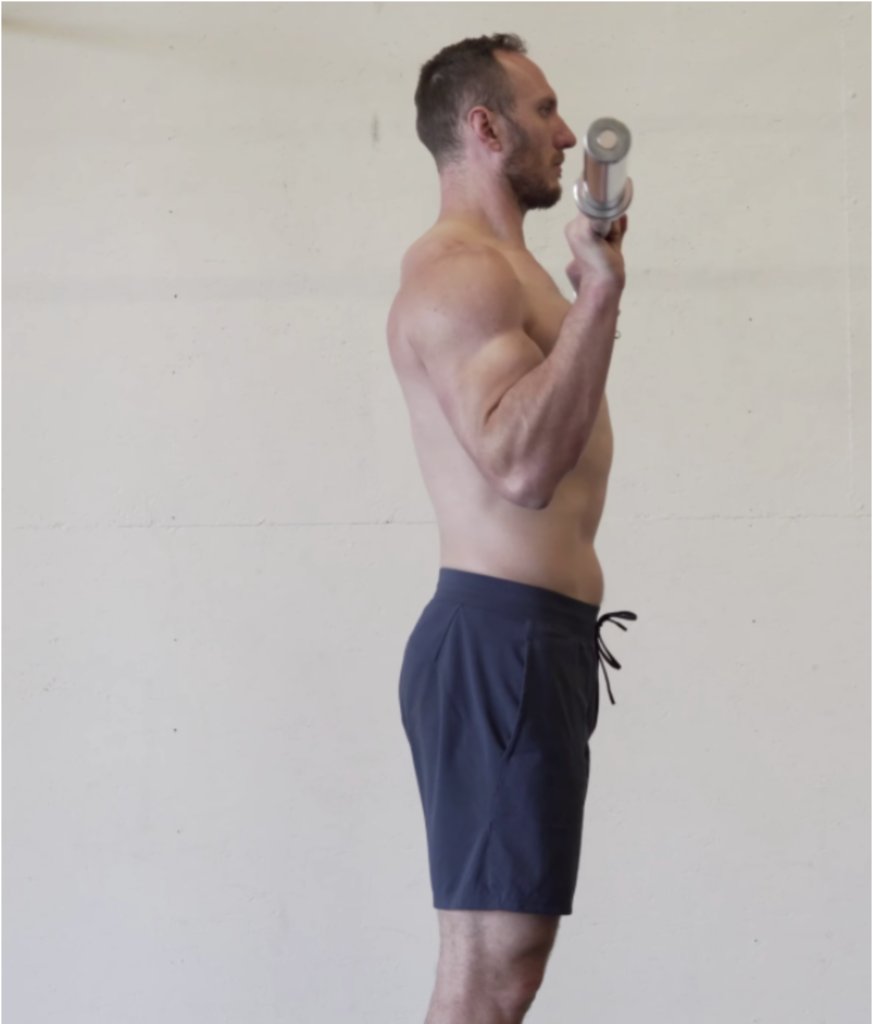
Here we flip our hands over to a pronated position and do the bicep curl.
This has been shown to keep a relatively similar activation of the biceps, but significantly increase the activation of the brachioradialis.
Since we perform pull ups with a similar overhand grip, it makes sense to do some work like this to ensure we build up the specific muscles for the pattern.
So if you’re doing bicep work 2 days a week, you can do one day with your palm up, and one day with your palm down.
Transitioning to the infraspinatus, Townsend et al. identified the prone shoulder horizontal abduction being a great exercise to get a high activation out of it.
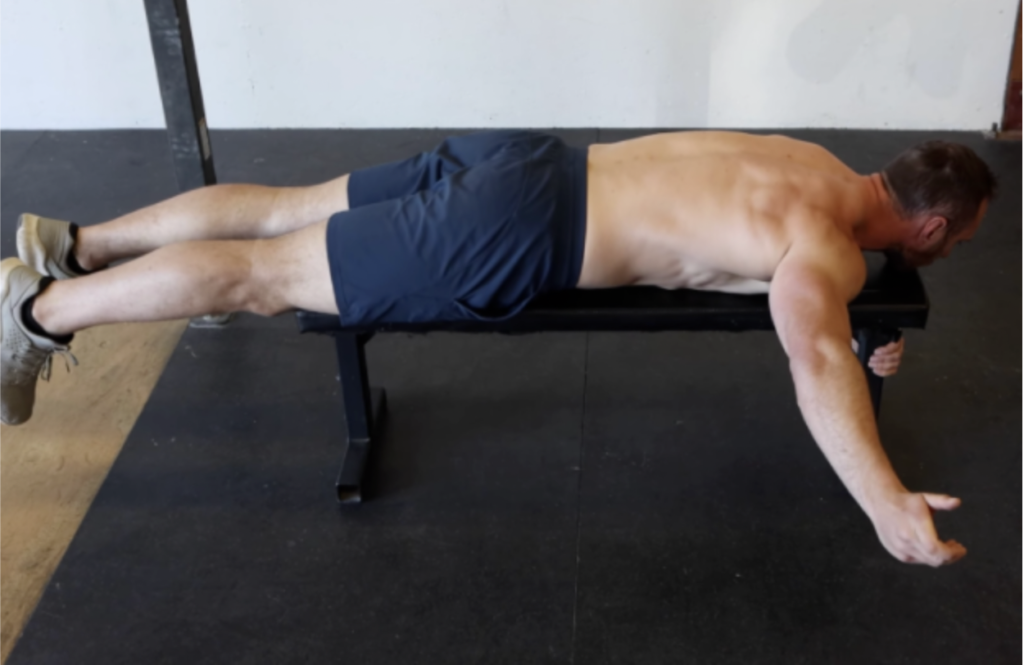
By also putting the shoulder in an externally rotated position is a bonus to get a bit more challenge to it.
This exercise in particular is a pretty solid choice for an accessory for the pull up since it not only shows a high activation of the infraspinatus, but it also really challenges the middle delt and mid trapezius – both of which are really important for success in the pull up.
Now if we stick with this same exercise, but just raise our arm up a bit further, to about 120* degrees of shoulder abduction, we can really challenge our lower trapezius.

Studies from Ekstrom and Reinold have reported this being one of the best exercises to get lower trap activation.
Similar to the move prior with the arm being a bit lower, it also challenges many of these other muscles like the deltoid, as well as getting some more work for the infraspinatus in.
Given their overlap, we can follow a similar approach like the bicep curl, where we spend half of our time doing one of the two movements, and the rest of the time doing the other.
For the external obliques and the rectus abdominis, doing some sort of movement like a hanging knee or hanging leg raise is an excellent option.

By tucking our knees to our chest, or legs up to the roof, we have to posteriorly tilt our pelvis and flex our spine against gravity.
This is heavily done by our external obliques and rectus abdominis.
If you look at a pull up, as we go up, these muscles are doing this action isometrically, resisting being pulled into extension.
The knee raise is a bit easier, so for those who aren’t quite as strong in the midsection, start there.
For those who are stronger, go with the leg raise and get those feet to the roof.
Lastly, it gets us working on our hanging grip strength which is a good bonus.
Collectively, these movements make up some of the best accessories for pull ups.
Now realistically, as long as you’re doing a collection of pull ups, pull up variations, pulldowns, rows, curls, upper back work, and various abdominal work, you’re probably fine.
However, these movements do have a bit more support for their utility towards the pull up.
Hopefully you found this blog helpful, if you’d like a video format of it, check out our youtube video on this topic:


